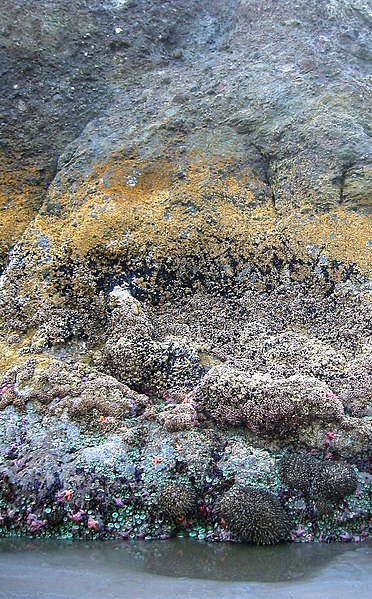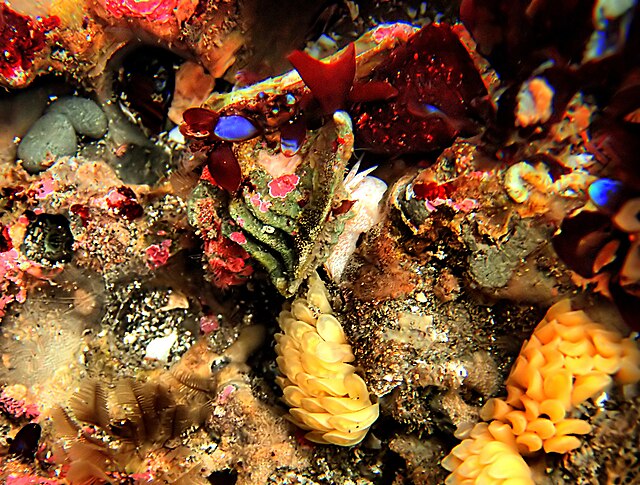A rocky shore is an intertidal area of seacoasts where solid rock predominates. Rocky shores are biologically rich environments, and are a useful "natural laboratory" for studying intertidal ecology and other biological processes. Due to their high accessibility, they have been well studied for a long time and their species are well known.
The rise and fall of tides on a rocky shore can define a volatile habitat for marine life
Rocky shore in Lanzarote, Spain
Rocky beach in Canary Islands
Rocky shore in Leblon, Brazil
The intertidal zone or foreshore is the area above water level at low tide and underwater at high tide: in other words, the part of the littoral zone within the tidal range. This area can include several types of habitats with various species of life, such as seastars, sea urchins, and many species of coral with regional differences in biodiversity. Sometimes it is referred to as the littoral zone or seashore, although those can be defined as a wider region.
Tide pools at Pillar Point showing zonation on the edge of the rock ledge
A rock, seen at low tide, exhibiting typical intertidal zonation, Kalaloch, Washington, western United States.
A California tide pool in the low tide zone
Nutrition (Eutrophic) Pollution in Assateague Island National Seashore, Maryland








